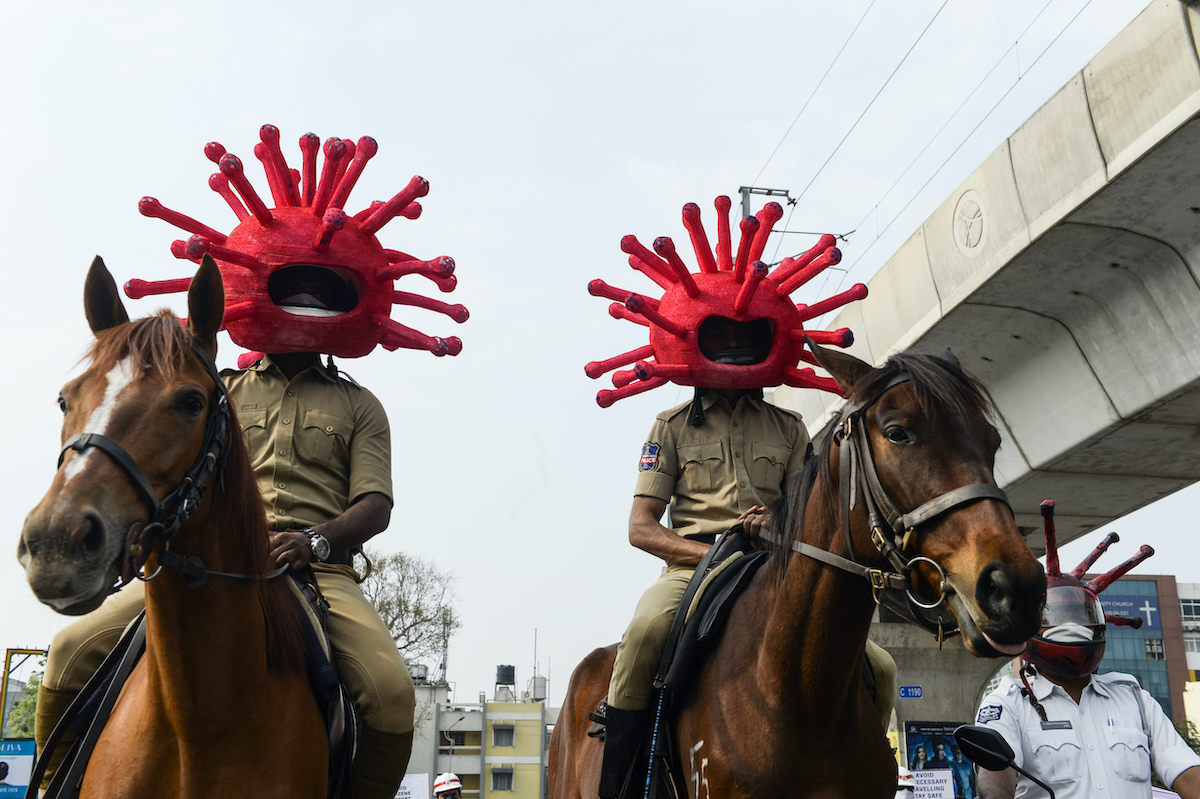(ATF) India faces a downgrade by sovereign credit assessor Moody’s Investors Service if the slowdown in Asia’s third-largest economy is worsened by the countrywide coronavirus lockdown.
Nomura Global Markets Research warned that the nation of 1.4 billion people could see a 6.1% contraction in second-quarter GDP and a further 0.5% decline in the following three months as the shuttering of the economy takes a 7.5% bite out of GDP.
“There is a rising risk of an imminent downgrade by Moody’s to Baa3 ‘stable’ from Baa2 ‘negative,” analysts Sonal Varma and Aurodeep Nandi wrote in a note to clients. A Moody’s downgrade would bring its India rating on par with those of S&P and Fitch, which rank India at BBB-. Nomura also expects Fitch to change its outlook on India to negative because of deteriorating debt dynamics and its assessment that the nation has a poor fiscal track record.
India’s $2.7 trillion economic growth has been slowing over the past few years and the lockdown since March 24 is expected to slow overall growth further. Real GDP could contract by 0.4 percent in this fiscal year, which ends next March, from 4.6 percent in FY20, which ended last month, it said.
READ MORE: Facebook takes $5.7-bn stake in India digital platforms
Throughout 2020, real GDP could fall 0.5% year-on-year, compared with 5.3% expansion in 2019, the report said. Growth in the quarter to March was 3.2 percent and is expected to recover to 1.4 in the fourth quarter.
“India’s Achilles heel on ratings is its parlous state of fiscal affairs and the risk of a sharp deterioration of general government debt from about 70% of GDP to potentially about 75%-80%,” the analysts wrote.
Even after the lockdown, due for a review on May 3, is lifted the economy faces difficulty in reviving as it must grapple with problems of raw material supplies, demand shortages, declining availability of labour and the need to ensure social distancing in a sanitised environment.
India was already in the middle of a banking and shadow banking crisis before the lockdown and now faces a household debt problem after it’s lifted. Most Indians depleted their savings during quarantine, and daily earners have been forced to scrounge for sustenance, depleting future demand and work potential. Additionally, hundreds of thousands of migrant workers laid off from factories and farms walked hundreds of miles back home. It may not be as simple to bring them back.
READ MORE: India fails to capitalise on cheap crude
The lockdown is likely to result in a shortfall of revenue and a widening fiscal deficit that’s dependent on disinvestment and non-tax revenues, Nomura wrote. The central government’s fiscal deficit could balloon to 5.1% of GDP in year ending March 2021, with upward risks.
“With states’ budgets combined, the consolidated fiscal deficit will expand to about 9.5%- 10% of GDP, close to record highs in the recent past,” it said. Shrinking GDP along with spending to support to key industries, including the banking sector, is likely to significantly increase the public debt-to-GDP ratio.
Still, the lockdown is unlikely to have an impact on the local currency, and the current account deficit is likely to shrink to 0.6% of GDP in FY21 compared with a deficit of 1.1% expected in FY20.
Bank earnings
In a review of Indian banks, BNP Paribas analyst Avneesh Sukhija forecasts earnings will drop about by 40% on average during the FY21 as fewer people and businesses take out loans and mortgages. They will also see a rise in the cost of credit.
BNP expects a strong upside for private banks, however.
The securities firm prefers banks over NBFCs with lenders having the advantage of a diversified loan book, higher capital adequacy levels and a stable deposit franchise. NBFCs could also face headwinds in the near term, including asset and liability management mismatches, collection issues, concentrated exposure and a longer recovery timeframe, it said.























